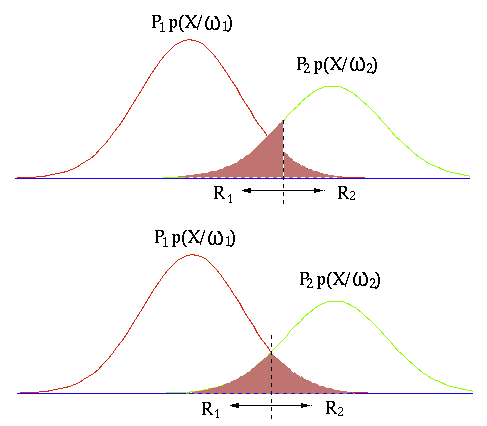First consider the case of ![]() classes. Let
classes. Let
![]() denote the joint probability that
denote the joint probability that ![]() belongs to
belongs to ![]() but is in
but is in ![]() (
(![]() ), then the total probability of error (misclassification) is:
), then the total probability of error (misclassification) is:
 |

It is obvious that the Bayes classifier is indeed optimal, due to the
fact that its boundaries corresponding to
![]() guarantee the classification error to be minimized.
guarantee the classification error to be minimized.
Next consider multi-class case. As there are many different ways to have
a wrong classification and only one way to get it right, consider
